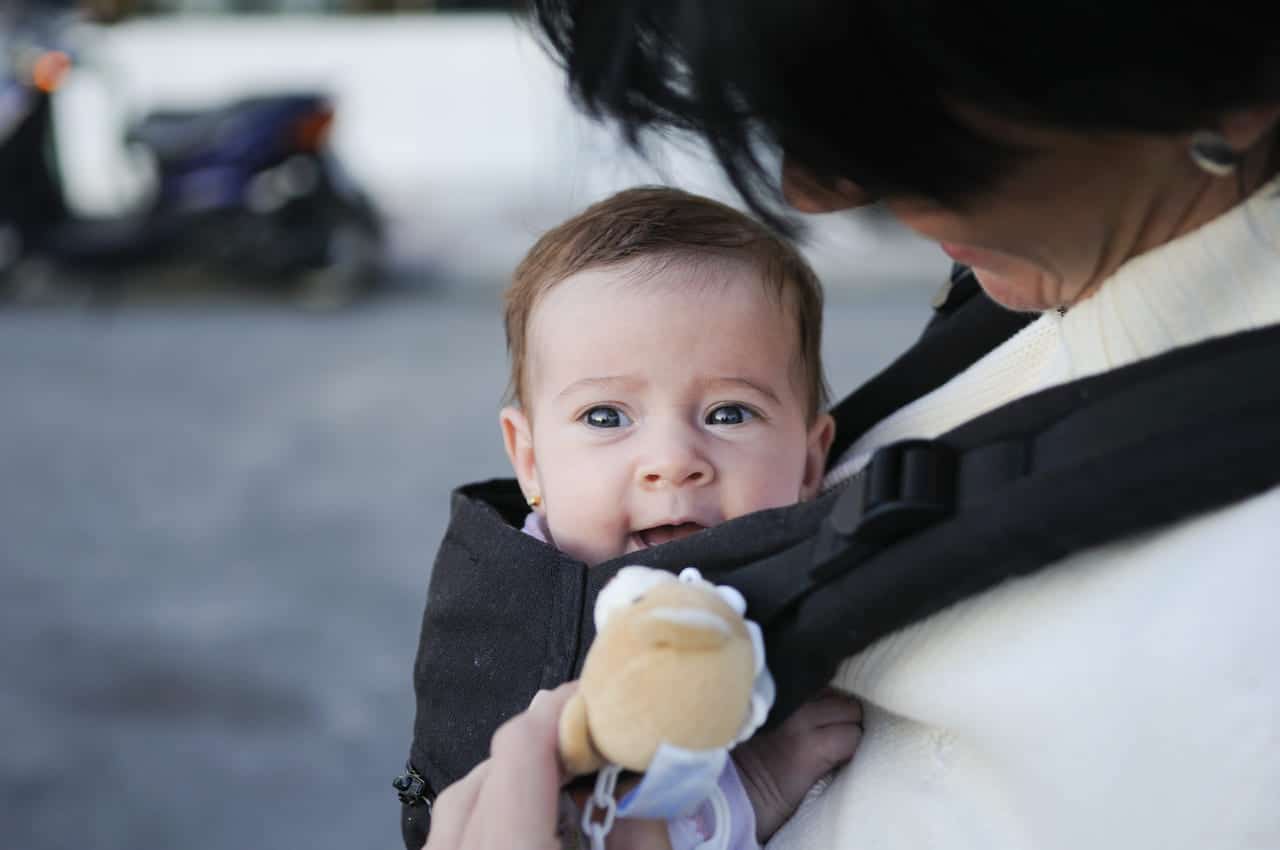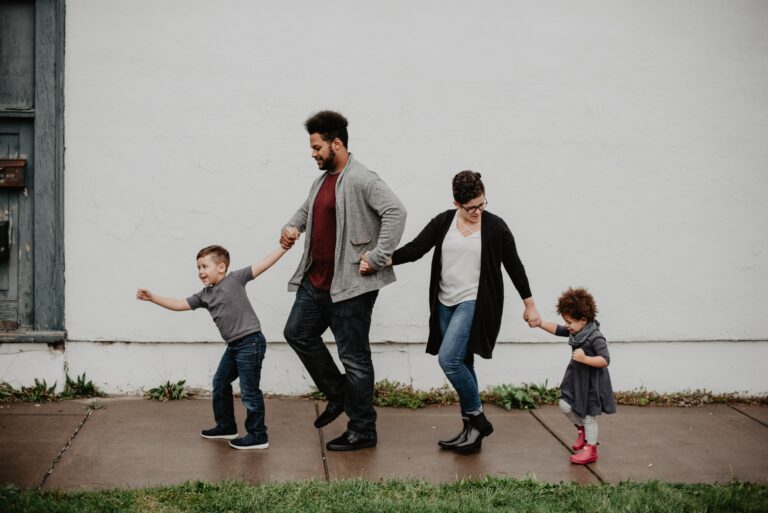Babywearing has become a popular trend in recent years with parents around the world. As different babywearing methods and devices emerge, more and more parents are interested in learning about the benefits of babywearing, how it can foster bonding, promote healthy physical development, and improve the overall well-being of both the infant and the parents.
Having a baby is one of life’s most incredible experiences and what better way to enjoy this journey than by wearing your baby close? Babywearing offers many benefits, including promoting bonding between parent and child. It can also help reduce the energy spent carrying equipment around on errands or trips. If you’re looking to learn more about how to safely wear your baby, and the benefits it can bring, then this article is for you. Here we’ll discuss why moms (and dads!) love babywearing so much, as well as address some common questions parents have when they start their journey with it. Read on to become informed on all things related to babywearing!
In This Article
What is Babywearing and its Benefits
Have you heard of babywearing? It’s a practice that has been around for centuries, but has recently gained popularity among modern parents. Babywearing is the act of carrying a baby in a carrier or sling, allowing the caregiver to keep their hands free while keeping their little one close. But it’s not just a convenient way to transport your baby – it actually has a host of benefits for both the baby and the caregiver. For the baby, being worn can help regulate their body temperature, aid in digestion, and promote bonding between baby and caregiver. For the caregiver, babywearing can help alleviate physical strain and fatigue, while also allowing for a stronger connection with their baby. So if you’re looking for a way to keep your baby close while still being able to get things done, consider giving babywearing a try.
- Bonding with your Baby: Carrying your baby close to you encourages emotional and physical contact, thus creating an excellent bonding opportunity.
- Hands-Free Parenting: Babywearing frees up your hands to do other things, such as preparing meals or doing household chores while keeping your baby close.
- Convenient for Travel: Babywearing eliminates the need to carry a bulky stroller, especially in crowded spaces like airports or public transport.
- Promotes Proper Physical Development: Carrying your baby upright helps to strengthen and develop their neck, back, and spine muscles.
- Calming for both Baby and Parent: Babies who are carried often cry less as they feel comforted and secure, reducing stress levels for both parents and the baby.
Types of Baby Carriers
When it comes to carrying your little one, there are several types of baby carriers to choose from. One option is a soft structured carrier, which typically has adjustable straps and waistbands for a customized fit. Another popular style is a wrap carrier, which uses long strips of fabric to create a cozy and secure hold for your baby. For those who want an option that can be used from infancy to toddlerhood, a convertible carrier may be a good choice, as it can be adjusted as your child grows. Finally, some parents prefer a sling carrier, which is essentially a fabric loop that goes over one shoulder and allows for easy, hands-free carrying. Consider the needs of you and your baby to determine which type of carrier is the best fit for your family.
– Wraps
Wraps are a popular food item that has been enjoyed in different cultures for centuries. Originally used as a way to preserve food, wraps have evolved into a delicious and convenient way to consume various fillings. Wraps are known for their versatility and endless possibilities when it comes to ingredients. From classic combinations like turkey and avocado to more adventurous options like tofu and peanut sauce, there’s a wrap out there for everyone. Whether you’re looking for a quick and easy lunch or a healthier alternative to traditional sandwich bread, wraps are a must-try food item. They’re a great way to mix up your eating routine and experiment with new flavors and ingredients. So why not give wraps a chance and indulge in their deliciousness today?
– Slings
Slings are a versatile tool that have been used for centuries across many cultures. They are simple in design, consisting of a pocket or cradle to hold a projectile and two cords, or “arms,” to launch it. With practice, a slingshot can be a deadly weapon in the hands of a skilled user. However, slings are also used for more practical purposes such as hunting small game or controlling livestock. The widespread use of slings throughout history speaks to their effectiveness and ingenuity as a tool.
– Soft Structured Carriers
Soft structured carriers are a popular and convenient option for parents looking to carry their babies. These carriers are designed to be lightweight and easy to use, allowing parents to easily carry their little ones with them wherever they go. With a wide range of styles and colors available, parents can find a carrier that suits their style and needs. In addition to their convenience, soft structured carriers are also a great way to promote bonding between parent and child, as they allow for close physical contact and communication. So if you’re looking for a comfortable and practical way to carry your baby, a soft structured carrier may be just what you need.
Finding the Right Carrier For You And Your Baby
Finding the right fit for you and your baby can be a challenge, but it’s one that is worth putting in the effort for. Each family has different needs, preferences, and lifestyles, so it’s important to consider all of these factors when choosing the perfect fit. Some families prefer a more traditional route with a full-time nanny, while others prefer a daycare setting that provides socialization for their child. It’s important to also consider whether you would like to have a live-in or live-out nanny, as well as whether you prefer someone with formal training or not. Ultimately, finding the right fit for you and your baby will require some research and trial-and-error, but once you find the perfect match, it can make all the difference in providing the care and support your family needs.
- Consider the basic baby carrier types, such as wraps, slings, and structured carriers, to determine which style works best for your needs.
- Look for carriers with adjustable straps, waist belts, and buckles to ensure a good fit for both you and your baby.
- Choose a carrier with proper head and neck support for younger babies, especially those who cannot hold their heads up.
- Think about the ease of use and accessibility of the carrier, including how easy it is to put on and take off.
- Consider the weight capacity of the carrier to ensure it can accommodate your growing baby.
- Check the fabric quality, breathability, and ease of care to make sure it’s comfortable for you and your baby, and easy to clean.
- Read reviews, ask for recommendations from other parents, and test the carrier out before making a final decision to ensure it works well for both you and your baby.
Safety Concerns With Babywearing
As a parent, keeping your little one close while multitasking is a top priority. Babywearing is an excellent way to foster a strong bond with your baby, allowing them to feel your movements and heartbeat while freeing up your hands. However, safety concerns arise when it comes to wearing your baby. Ensuring the proper carrier, reading the safety guidelines, and following proper positioning techniques are crucial steps for a safe and comfortable babywearing experience. It is essential to keep in mind that babies should have clear air passages, avoid loose blankets or clothing, and ensure the baby’s head and neck have proper support. As a responsible parent, taking these measures will create a secure and positive babywearing experience for both you and your baby.
Tips For Properly Using a Baby Carrier
Using a baby carrier can be a lifesaver for parents who want to keep their baby close and have their hands free to do other things. However, it’s important to know how to use it properly to ensure both comfort and safety for both you and your baby. Start by choosing the right carrier that is appropriate for your baby’s age and weight. Adjust the carrier to fit snugly, but not too tight, to your body. The baby’s legs should be in a spread-out “M” position, and their head should be supported. Always check the carrier for any signs of wear or tear before using it. Remember, using a baby carrier can also help promote bonding between you and your little one.
- Choose the right carrier for your baby’s age and size
- Position your baby properly with their face and airways uncovered
- Use safety harnesses and straps correctly
- Adjust the carrier for a snug and secure fit
- Practice good posture and avoid arching your back
- Take regular breaks and change positions
- Keep an eye on your baby’s body temperature to ensure they are not too hot or cold
- Only use the carrier for short periods of time
- Avoid any activities that could be dangerous or hazardous while using a baby carrier, such as cooking or climbing stairs
- Always read and follow the manufacturer’s instructions and safety guidelines.
Tips To Increase Comfort While Wearing Your Baby
When it comes to wearing your baby, comfort is key for both you and your little one. Here are some tips you can follow to increase overall comfort while babywearing. First, make sure the carrier is properly adjusted to your body and your baby’s size. This will ensure that the weight is evenly distributed and not putting pressure on any one area. Additionally, choose a carrier made from breathable materials, especially if you live in a warm climate. This will prevent both you and your baby from overheating. Lastly, take breaks and adjust your position often to avoid muscle fatigue and soreness. By following these tips, you can enjoy the benefits of babywearing without sacrificing comfort for you or your baby.
- Choose the right carrier for your baby’s age, size, and weight
- Adjust the carrier’s straps and buckles to achieve a snug and secure fit
- Practice putting on and taking off the carrier before attempting it with your baby
- Position your baby close to your body and ensure their airways are clear
- Use a carrier with good weight distribution to avoid putting too much strain on any particular part of your body
- Take breaks and switch between different carrying positions to avoid getting tired or uncomfortable
- Wear comfortable clothes and shoes that offer good support for your body
- Use a carrier with breathable fabric or mesh during warm weather to avoid overheating
- Be mindful of your baby’s cues and signs of discomfort, and adjust the carrier as necessary to ensure their comfort
Conclusion
Babywearing is becoming more popular as parents recognize the many benefits it offers. By choosing the right carrier, you and your baby will not only be comfortable but you can also have peace of mind knowing that you know the basics of how to properly and safely babywear. You may find yourself feeling overwhelmed by the endless possibilities, however once you’ve done your research and gotten accustomed to wearing a carrier, you’ll be thankful for all of the convenience and closeness it brings to your relationship with your little one!











